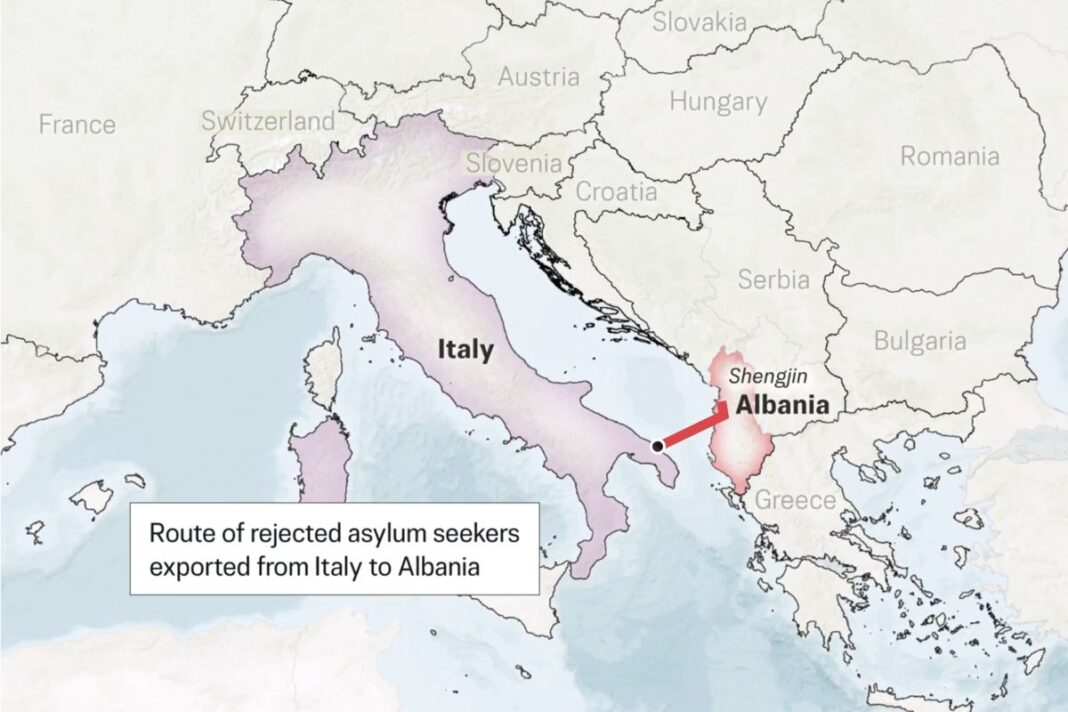Italy recently sent rejected asylum seekers to ‘repatriation hubs’ in Albania.
In April, Italy became the first EU state to successfully send rejected asylum seekers beyond the bloc’s borders, after its first three attempts were blocked by national and European courts.
The breakthrough came as the EU is also starting to enact broader plans to shift asylum processing offshore. Those plans will also have to run a gauntlet of international laws and human rights standards that could ultimately tie them up for years, according to experts.
Italian Prime Minister Giorgia Meloni’s bid to divert sea arrivals from North Africa to a non-EU “return hub” in Albania was blocked by courts three times after efforts began in October 2024.
Only by adding Albania to its own safe third country list and rebranding detention centers as “repatriation hubs” did Italy manage to bypass a European Court of Justice ban. On April 14, it sent 40 rejected asylum seekers to the Italian-run centers there.
Under the safe third country principle, used to avoid overloading countries with asylum claims, asylum seekers can be sent for protection to a country other than the one in which they initially sought asylum.
Under the EU’s Pact on Migration and Asylum, member states can strike agreements with non-EU states to handle asylum claims extraterritorially, potentially setting up processing centers in North Africa or beyond.
Migration Management
Illegal immigrants are entering the EU primarily via Mediterranean sea crossings from North Africa and by overland routes through Poland and the Balkans, according to data from Frontex, the European Border and Coast Guard Agency.
More than 1 million migrants entered the continent in 2015, amid wars in Syria and Iraq, according to estimates by the UN Refugee Agency.
Frontex said that just over 239,000 illegal crossings were detected at the EU’s external borders in 2024—the lowest number since 2021. Illegal crossings are usually orchestrated by organized criminal networks and smugglers.
Around 912,000 asylum applications were filed in the EU in 2024 as well, a 13 percent drop from 2023, according to Eurostat. Syria represented the largest percentage of asylum seekers, at 16 percent.
By Owen Evans








